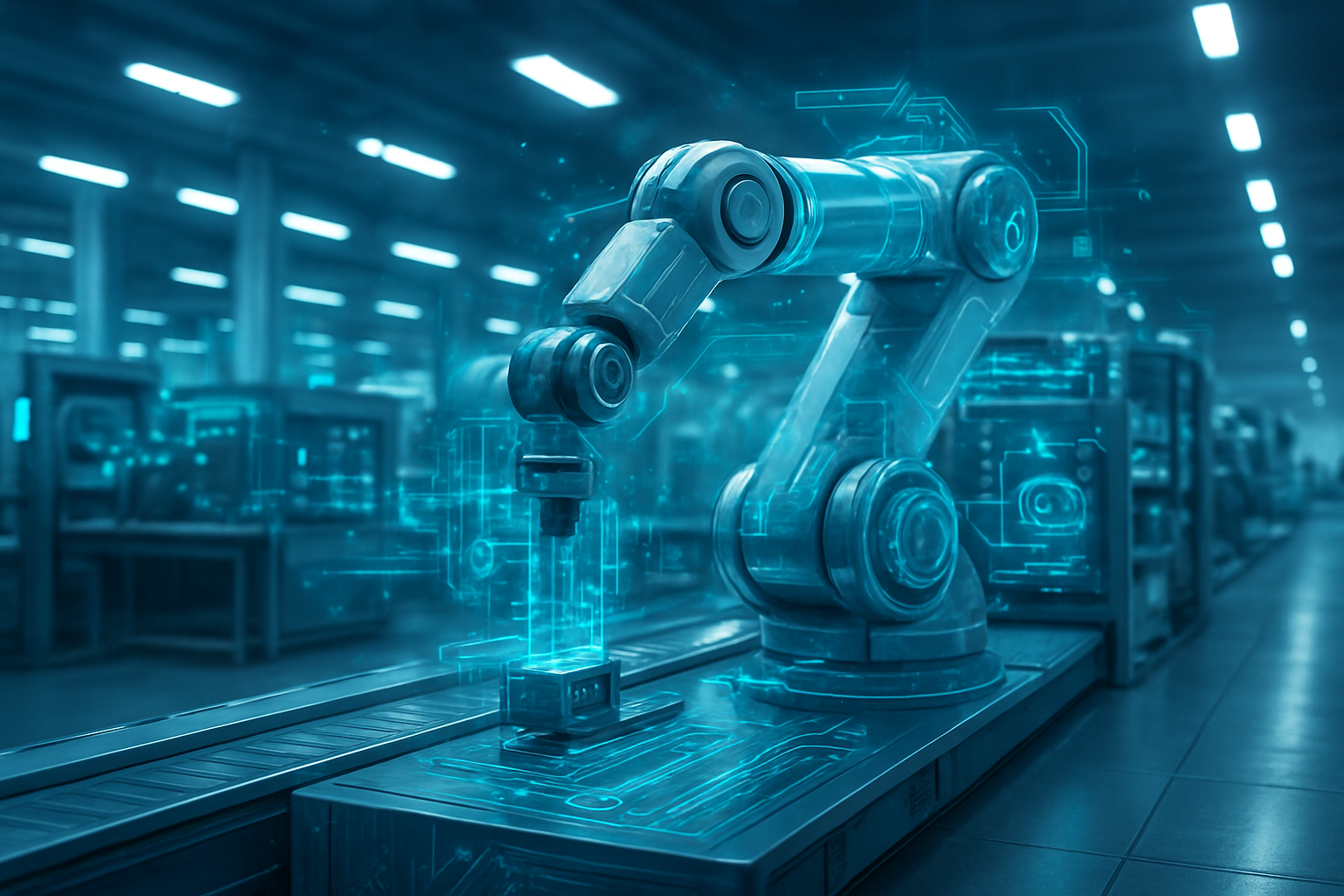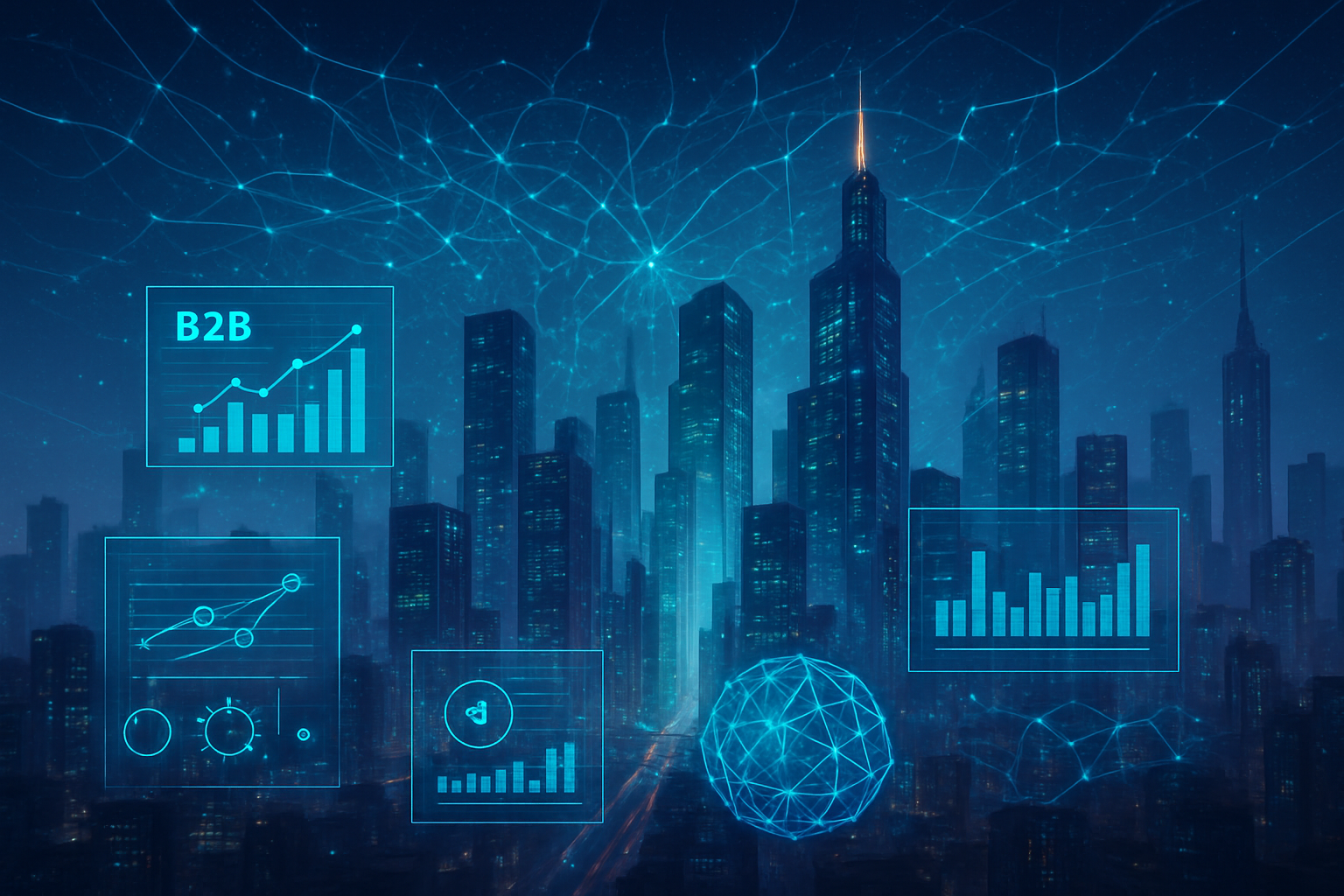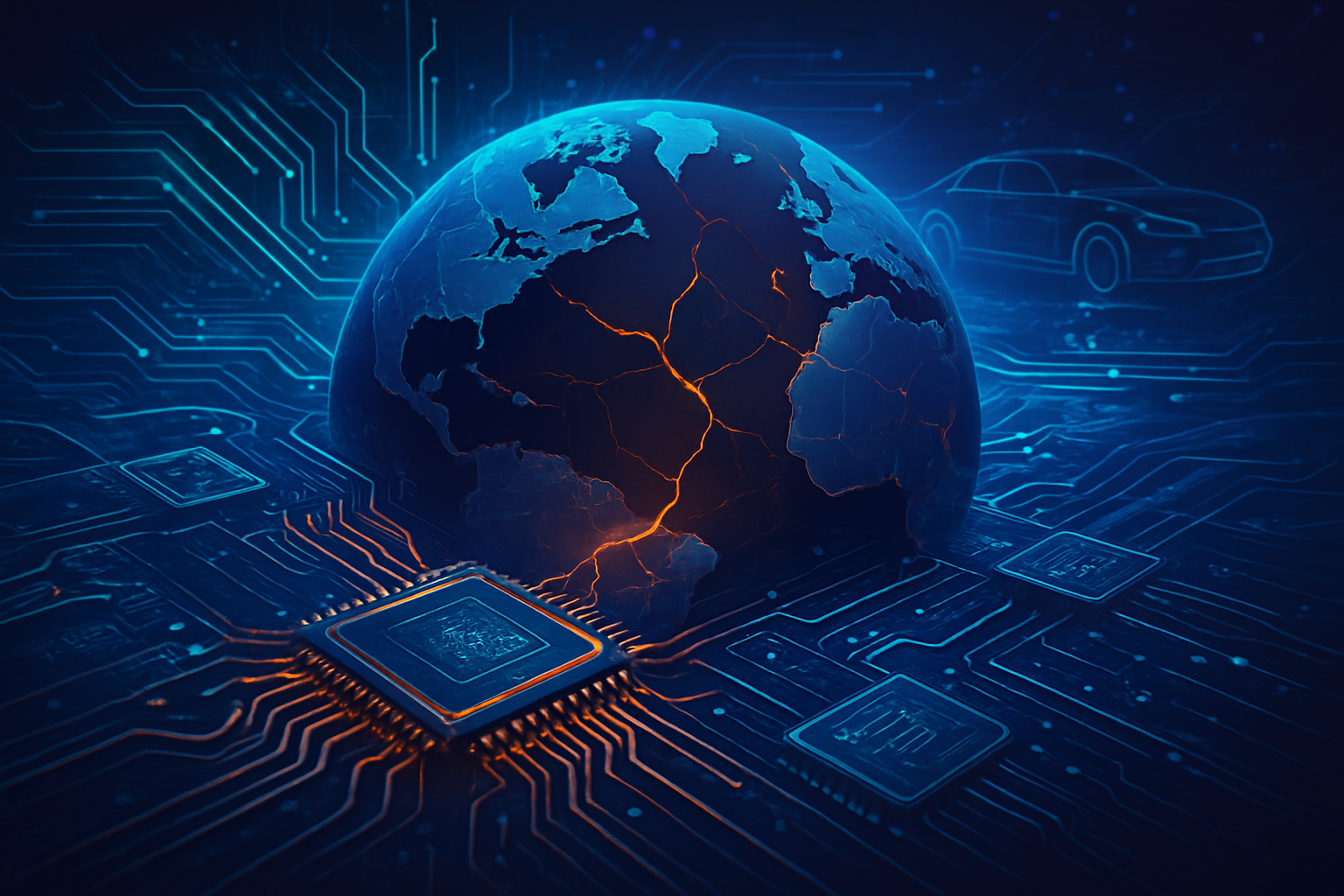Activate Consulting's highly anticipated "2026 Technology & Media Outlook," released on November 5, 2025, paints a vibrant picture of explosive growth across global internet, media, and B2B technology sectors. The report forecasts an astounding $1.3 trillion in incremental revenue by 2029, signaling a transformative era driven by evolving consumer behaviors and the pervasive influence of technologies like Generative AI. This outlook serves as a critical guide for industries grappling with the rapid convergence of digital landscapes, urging companies to innovate and expand beyond traditional boundaries to capture an increasingly fragmented consumer attention.
The immediate significance of this report lies in its declaration of a "collapse of industry silos." Traditional demarcations between technology, media, and even B2B services are blurring at an unprecedented pace. This necessitates a strategic re-evaluation for businesses, pushing them to embrace interdisciplinary approaches and leverage emerging technologies to stay competitive. The report's optimistic yet challenging tone suggests that while massive growth is on the horizon, only those agile enough to adapt to these collapsing silos and harness the power of AI will truly thrive.
The Trillion-Dollar Tsunami: Deep Dive into Sectoral Growth and AI's Reshaping Force
The "2026 Technology & Media Outlook" details a staggering expansion across multiple fronts. The B2B technology and software segment alone is projected to add a colossal $907 billion, pushing its market value to an impressive $3.9 trillion. This represents a significant acceleration from previous forecasts, underscoring the relentless demand for enterprise-grade solutions and digital transformation tools. While earlier projections anticipated global internet and media businesses to grow by over $400 billion between 2022 and 2026, reaching $2.7 trillion, the updated outlook reinforces this upward trajectory, with global advertising expenditure continuing to be a major catalyst.
Beyond these broad categories, the report delves into granular predictions for various sub-sectors. The global music industry, primarily fueled by digital audio, is set to reach $94 billion in revenue by 2026. Health and wellness technology and services are also on a robust growth path, expected to hit $30 billion, driven by surging interest in diet, meditation, and sleep applications. E-commerce is projected to swell to $9.4 trillion, with livestream e-commerce alone witnessing a dramatic rise from $5 billion in 2020 to an estimated $55 billion by 2026. The global video game market is not to be outdone, with predictions placing its value near $220 billion by 2026, solidifying its position as a major social and economic force.
A central theme driving these transformations is the profound impact of Generative AI (GenAI). Activate Consulting identifies GenAI as the single most significant driver of change, monetization, and investment. It is fundamentally reshaping online search behaviors, with 72 million U.S. adults expected to use a GenAI platform as their primary search starting point by 2029. This shift from traditional search engines to conversational AI interfaces represents a paradigm change, challenging established digital advertising models and creating new avenues for content discovery and interaction. The report also highlights the "Super User" economy, a highly engaged 28% of the population that disproportionately drives media consumption and tech adoption, often being the first to embrace new AI applications and devices, making them a critical demographic for companies to understand and target.
Another burgeoning frontier is Spatial Computing, with dedicated spatial device shipments forecasted to reach 50 million units by 2027. This technology, integrating AI and spatial intelligence into see-through headsets, promises to revolutionize how users interact with digital content and the physical world, offering an immersive experience that blurs the lines between reality and virtuality. The convergence of gaming and media is also recognized as a significant trend, with gaming platforms increasingly serving as social hubs, fostering deeper integration with broader media experiences and opening new monetization opportunities.
Corporate Fortunes in Flux: Who Wins and Who Adapts in the New Tech & Media Frontier
The seismic shifts predicted by Activate Consulting's 2026 Outlook will inevitably redraw the competitive landscape for tech giants, established media players, and agile startups alike. Companies deeply entrenched in B2B technology, with robust cloud infrastructure and AI integration, are poised for significant gains. Microsoft (NASDAQ: MSFT), with its dominant position in enterprise software, cloud computing (Azure), and its strategic investment in OpenAI, stands to be a major beneficiary. Its Copilot offerings, deeply integrated into productivity tools, directly address the report's emphasis on demonstrating clear ROI for B2B tech. Similarly, Salesforce (NYSE: CRM) will leverage its CRM leadership and Einstein AI to offer tailored customer targeting and improve sales cycles, aligning perfectly with the evolving demands of the B2B market. Adobe (NASDAQ: ADBE) and ServiceNow (NYSE: NOW) are also well-positioned, with Adobe's creative and experience clouds crucial for capturing fragmented attention, and ServiceNow's workflow automation directly addressing the need for operational efficiency and tangible ROI.
Generative AI's transformative power, particularly its impact on search, presents a dual-edged sword. NVIDIA (NASDAQ: NVDA) remains indispensable, as its GPUs form the foundational hardware for training and deploying complex GenAI models, ensuring its continued prosperity as AI adoption skyrockets. Alphabet (NASDAQ: GOOGL), despite its traditional search dominance facing disruption, is a powerhouse in AI research (Gemini, DeepMind) and cloud infrastructure (Google Cloud), allowing it to adapt and integrate AI into its diverse product portfolio. Amazon (NASDAQ: AMZN) through AWS Bedrock, and Microsoft via Azure and OpenAI partnership, are set to be the primary enablers for businesses building and deploying custom GenAI applications, offering scalability and access to advanced models. However, the report's assertion that GenAI is "fundamentally altering online search" poses a significant challenge for Alphabet's core advertising revenue model if users increasingly bypass traditional search for direct AI queries.
The nascent field of Spatial Computing is another arena for intense competition and potential breakout success. Apple (NASDAQ: AAPL), with its high-end Vision Pro, is strategically positioning itself as a leader in consumer spatial computing, leveraging its strong ecosystem and brand power. Meta Platforms (NASDAQ: META), despite significant investments in the metaverse, continues its long-term play in VR/AR hardware (Quest series), aiming to build foundational social and entertainment platforms for these immersive environments. As this sector matures, companies that can innovate in both hardware and compelling software experiences, while attracting a robust developer community, will define the future.
In the e-commerce realm, the projected $9.4 trillion market offers opportunities beyond the top players. While Amazon (NASDAQ: AMZN) will undoubtedly continue its dominance, benefiting from its logistics and burgeoning retail media business, companies like Shopify (NYSE: SHOP) are crucial for the "up for grabs" $2 trillion in growth, empowering a vast ecosystem of smaller and medium-sized businesses. Traditional retailers like Walmart (NYSE: WMT) and Target (NYSE: TGT) are also evolving into formidable omnichannel and media entities, leveraging their physical footprints and expanding retail media networks to capture consumer attention and ad revenue. Conversely, smaller brick-and-mortar retailers lacking a sophisticated digital presence or data analytics capabilities, and generic online marketplaces, may struggle against these integrated powerhouses.
The "32-hour day" of multitasking consumers and the rise of social video are reshaping streaming media. Netflix (NASDAQ: NFLX) and The Walt Disney Company (NYSE: DIS) are strategically expanding into ad-supported tiers and leveraging their vast content libraries to compete for attention. Alphabet (NASDAQ: GOOGL), through YouTube, remains a dominant force in social video, perfectly aligned with the trend of video being 71% of all social content. However, traditional linear TV and cable providers face continued disruption as cord-cutting accelerates, while smaller, undifferentiated streaming services may struggle to compete for content spend and subscriber attention against the giants and the proliferation of free streaming options.
Finally, gaming, projected to reach nearly $220 billion by 2026, is increasingly a social hub. Tencent Holdings (OTCMKTS: TCEHY) dominates mobile gaming, the primary growth driver, and integrates deeply with social media. Microsoft (NASDAQ: MSFT), with its Xbox ecosystem and strategic acquisitions like Activision Blizzard King, takes a full-stack approach, leveraging cloud gaming and GenAI for development. Sony (NYSE: SONY) maintains its strong PlayStation console presence. Companies like Unity Software (NYSE: U) and Roblox (NYSE: RBLX) are direct beneficiaries of GenAI lowering barriers to game creation and fostering user-generated content and social interaction, respectively. Traditional game studios slow to adopt GenAI or platforms that don't foster strong social interaction risk being outpaced by more agile, AI-integrated competitors.
Broader Implications: Redefining Work, Reality, and Responsibility in an AI-Driven World
Activate Consulting's 2026 Outlook is more than a financial forecast; it's a blueprint for a society undergoing profound transformation, with Artificial Intelligence at its core. The projected trillion-dollar growth across B2B technology, media, and internet sectors, propelled by Generative AI (GenAI) and spatial computing, signals an era of "intelligence amplified." This extends far beyond mere technological advancement, touching upon the very fabric of work, personal interaction, and the ethical frameworks governing our digital existence. The "collapse of industry silos" and the concept of a "32-hour day" driven by pervasive multitasking are not just market trends but indicators of a deeper societal restructuring, where the lines between professional and personal, digital and physical, are increasingly blurred.
The most significant societal impact could be on the future of work. With GenAI automating complex tasks and streamlining workflows, the report implicitly supports the growing discourse around a potential 32-hour work week. Visionary leaders like Eric Yuan of Zoom (NASDAQ: ZM) and Jamie Dimon of JPMorgan Chase & Co. (NYSE: JPM) have publicly mused about shorter workweeks, with Bill Gates even forecasting a two- or three-day week. This shift, driven by AI-enhanced productivity, promises improved work-life balance and reduced burnout. However, it also necessitates a critical examination of job displacement versus transformation. While new roles in AI development and data analysis will emerge, many existing positions will either evolve dramatically or become automated, requiring significant reskilling and upskilling initiatives to prevent a widening employment gap.
Beyond work, the pervasive integration of AI and spatial computing promises enhanced experiences and accessibility. Spatial computing, with its forecasted 54 million headset shipments by 2028, has the potential to revolutionize education through immersive learning environments and democratize healthcare by offering virtual training. GenAI, meanwhile, will personalize everything from shopping to customer service, tailoring digital interactions to individual preferences. Yet, this rapid technological adoption also carries the risk of exacerbating the digital divide. The report's emphasis on the "Super User" economy—a highly engaged segment disproportionately driving tech adoption—underscores the potential for unequal access to these transformative tools, creating a new stratification based on digital literacy and resource availability.
However, this unprecedented technological acceleration is not without its ethical quandaries. The widespread integration of GenAI raises significant concerns about bias and discrimination, as models trained on imperfect datasets can perpetuate and amplify societal prejudices. The potential for misinformation, deception, and the proliferation of deepfakes poses a severe threat to public trust and democratic processes, as AI can generate highly realistic yet entirely fabricated content. Privacy and data security are also paramount, especially with spatial computing collecting highly personal data like eye-tracking and physical movements, and GenAI systems processing vast amounts of individual information across collapsing industry silos. The complexities of copyright and intellectual property, the "black box" nature of advanced AI models hindering accountability, and the substantial environmental impact of training and operating large AI systems further compound these ethical challenges, demanding proactive regulatory and industry responses.
Comparing this moment to previous technological shifts reveals both parallels and unique accelerations. Unlike the Industrial Revolution's mechanization or the internet's connectivity, the current AI revolution is about "intelligence amplified," extending human cognitive abilities at an unprecedented scale. AI adoption is occurring at a significantly faster rate than previous technologies, driven by building upon existing infrastructure and compound growth. This is not merely a new device or a new way to connect; it's pervasive intelligence integrating into nearly every facet of life, dissolving traditional industry boundaries and creating a more integrated, digitally-mediated existence. This profound pervasiveness and the new scale of ethical challenges—from autonomous decision-making to synthetic reality—necessitate a rapid and thoughtful regulatory response, as exemplified by initiatives like the European Union's AI Act, to ensure responsible innovation.
The Horizon Ahead: AI-Powered Ecosystems and the Blurring of Realities
Looking beyond the immediate forecasts, Activate Consulting's 2026 Outlook, coupled with broader AI trends, paints a compelling picture of future developments that will fundamentally reshape our digital and physical realities. The near-term will see an accelerated integration of AI across all sectors, while the long-term promises fully autonomous systems and a seamless blend of immersive experiences.
In B2B technology, the coming years (2026-2028) will solidify Product-Led Growth (PLG) as a dominant strategy, allowing customers to experience solutions firsthand. B2B SaaS platforms will evolve with enhanced AI-driven insights, automation, and self-service models, prioritizing user experience above all else. AI Copilots, already adopted by over half of firms, will continue to drive significant productivity gains and error reduction in customer care and support. Looking further out, the distinction between B2B marketing and customer success functions is predicted to dissolve, with agility, rather than sheer scale, becoming the ultimate differentiator for success.
Generative AI is poised for an even deeper penetration. In the near-term, it will profoundly reshape mobile and web applications, with projections suggesting 80% of all mobile app interactions will leverage AI by 2026. The widespread adoption of agentic AI systems, capable of independent decision-making and multi-step actions, will transform chatbots into proactive, intelligent assistants interacting with third-party applications. Long-term, creative AI platforms are expected to form the backbone of digital innovation, powering autonomous systems and intelligent assistants that actively collaborate with humans in generating ideas and solving complex problems, contributing trillions to the global economy by 2030.
Spatial computing is set for a significant boom, largely catalyzed by Apple's (NASDAQ: AAPL) entry into the market. By 2027, dedicated spatial device shipments are forecasted to reach 50 million units, with nearly every device—from gym equipment to car dashboards—expected to become spatial computing-enabled. AI advancements will lead to increasingly seamless and interoperable spatial experiences, where AI agents anticipate user needs. The long-term vision involves a pervasive integration of AI and spatial intelligence into "see-through headsets" and beyond, unlocking vast potential for immersive work, entertainment, and social interactions, with the market growing at a robust 38% CAGR through 2030.
The media landscape will continue its rapid evolution. Near-term, the blurring of industry boundaries will intensify, with social media becoming predominantly video-based (71%), and retail media emerging as a formidable $100 billion business. The global music industry, primarily digital audio, will continue its growth trajectory, heavily influenced by AI-driven discovery platforms like TikTok. Advertising revenue is expected to surpass consumer spending by 2029, with digital advertising comprising over 80% of the total. Long-term, the entertainment and media industry is projected to reach $3.5 trillion by 2029, with AI revolutionizing everything from content creation to ad delivery, and personalized content becoming the norm.
However, realizing this future is not without its challenges. For GenAI, critical issues include robust data management and security to prevent leakage and ensure privacy, alongside addressing ethical concerns around bias, accuracy (halucinations), and the high cost of enterprise implementation. Spatial computing faces hurdles in hardware limitations (cost, form factor), the need for a mature ecosystem of networked data and integrated AI, and improving user experience for extended use. The media industry must contend with capturing fragmented consumer attention, navigating monetization in a world of declining traditional media, and tackling concerns like AI-supported piracy and the need for new journalistic paradigms. Across all sectors, robust regulatory and ethical frameworks are paramount to ensure responsible innovation.
Experts predict that Generative AI will remain the primary catalyst for change, moving beyond simple automation to become a collaborative partner with humans. Apple's influence will likely accelerate spatial computing's mainstream adoption, leading to more sophisticated, AI-generated spatial scenes and seamless device integration. The media industry will witness advertising becoming the predominant revenue stream, compounded by AI-optimized delivery and personalized content. Ultimately, the "32-hour day" and the "Super User" will continue to drive market trends, favoring businesses that proactively invest in AI-driven innovation and foster human-AI collaboration in an increasingly automated workplace.
Comprehensive Wrap-up: A New Era of Amplified Intelligence
Activate Consulting's "2026 Technology & Media Outlook" serves as a resounding declaration: we are on the cusp of a new era defined by "massive growth" and profound technological convergence. The projected $1.3 trillion surge in global internet, media, and B2B technology sectors by 2029, with B2B tech alone reaching $3.9 trillion, underscores an economy increasingly powered by intelligent automation and immersive digital experiences. Key takeaways reveal a landscape where Generative AI is not merely a tool but the central engine of change, fundamentally reshaping search, content creation, and enterprise productivity. The "collapse of industry silos" and the "32-hour day" highlight a new consumer paradigm demanding hyper-personalized, multi-platform engagement, while spatial computing promises to blend our digital and physical worlds in unprecedented ways.
This development signifies a pivotal moment in AI history, moving beyond previous milestones of mechanization and connectivity to an age of "intelligence amplified." The speed of AI adoption is accelerating at an unprecedented pace, deeply disrupting markets and attracting massive enterprise investment from the outset. Companies like Microsoft (NASDAQ: MSFT), NVIDIA (NASDAQ: NVDA), Amazon (NASDAQ: AMZN), and Apple (NASDAQ: AAPL) are strategically positioned to capitalize on these shifts, while traditional players and those slow to adapt face significant competitive pressures. The potential for a 32-hour work week, driven by AI-enhanced productivity, represents a societal shift with far-reaching implications for work-life balance and job transformation.
However, the long-term impact hinges on our collective ability to navigate the inherent complexities. Ethical concerns surrounding bias, misinformation (deepfakes), privacy, and accountability demand urgent attention and robust regulatory frameworks. The environmental footprint of large AI models also calls for sustainable practices. What to watch for in the coming weeks and months will be the continued integration of GenAI into everyday applications, the evolution of spatial computing hardware and software ecosystems, and how companies adapt their strategies to capture fragmented consumer attention across blurring industry lines. The ongoing regulatory debates, particularly concerning AI governance and data privacy, will also be critical in shaping the trajectory of this transformative era. The future promises an exhilarating, yet challenging, journey into a world where intelligence is not just artificial, but profoundly amplified.
This content is intended for informational purposes only and represents analysis of current AI developments.
TokenRing AI delivers enterprise-grade solutions for multi-agent AI workflow orchestration, AI-powered development tools, and seamless remote collaboration platforms.
For more information, visit https://www.tokenring.ai/.









